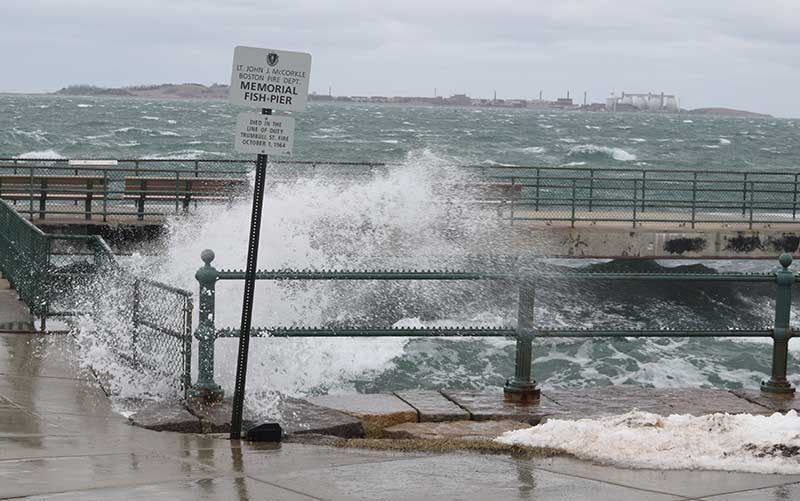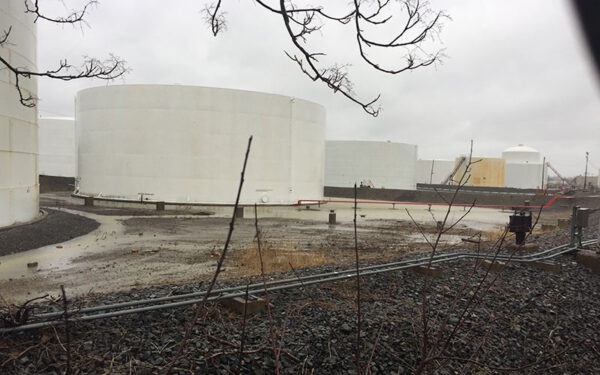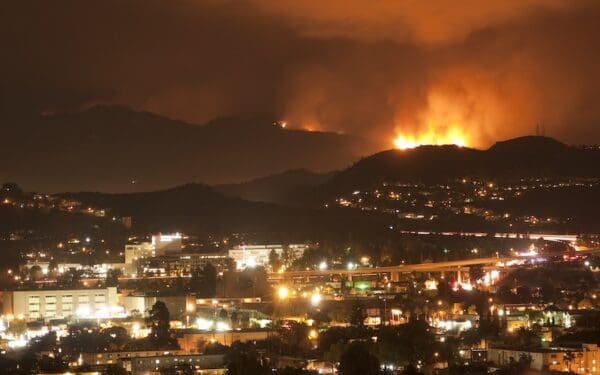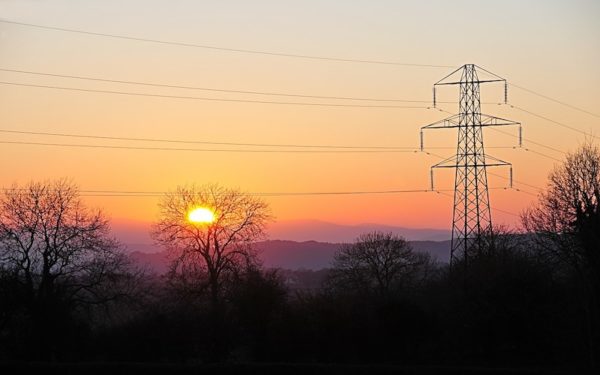
Boston already see flood waters during seasonal Nor'easters like the one above. How will it ensure we're prepared for a more significant storm while keeping people safe from COVID-19? Photo: Keith J. Fink via Shutterstock
We’re already well into the alphabet when it comes to 2020’s hurricane season – and August has barely even begun. Tropical Storm Isaias blew through New England yesterday, downing trees and power lines, flooding roads, and even triggering a statewide tornado warning in Massachusetts. At its hurricane strength, Isaias brought massive flooding to Puerto Rico and killing five people as it barrelled up the eastern seaboard. And last week, Hurricane Hanna made landfall in Texas, dumping up to 18 inches of rain in some areas as it roared across the state. The storm killed one person in Florida and caused upwards of $500 million.
Earlier this year, the National Oceanic and Atmospheric Administration forecasted six to 10 Atlantic hurricanes between now and November 30, with as many as six having the potential to cause major damage.
It’s clear why this is so frightening: Amid a raging pandemic, one that is hitting Black and Brown communities particularly hard, already-vulnerable communities find themselves even more threatened by the possibility of a significant storm hitting Massachusetts. That makes it more imperative than ever that we plan now for the storm season still to come.
Black and Brown Communities Face Twin Catastrophes
Over the last few years, we’ve seen flooding and damage throughout Massachusetts whenever Nor’ easters hit. A major hurricane will be dramatically worse. The infrastructure across Boston’s waterfront is already ill-prepared to deal with the impacts of the climate crisis. That, combined with the pandemic, means that the city’s low-income communities and communities of color could face multiple, simultaneous catastrophes this hurricane season.
It also means that this year, evacuation planning comes with enormous complexity and deeply troubling issues of equity.
Chaotic re-openings in states in the path of Atlantic storms are already driving up COVID-19 infection rates. With hurricane season already upon us, we now face a situation in which – instead of asking people to shelter in their houses or apartments – states may need to urge residents to leave their homes and congregate in crowded shelters.
Making all of this dramatically worse is the fact that those hit hardest by the pandemic are people of color and those living in poverty. That is as true in Massachusetts as it is in other states. In June, the Boston Globe reported that the state’s Latinx population represents 30% of its positive cases, despite being only 12% of the population; Black residents make up 14% of cases, even though they are only 7% of the population. A major hurricane could force the people already most at risk of infection to choose between flooding and living without power or evacuating to a shelter that could sicken their families.
Preparing For A Major Storm Amid a Still-Raging Pandemic
With the first significant storm of the season having just hit New England, Massachusetts officials are already behind in preparing for this scenario. A two-tiered shelter system that will segregate the likely sick from those with no signs of COVID must be the goal. In short: State officials need to find space – hotels, schools, dorms – where any evacuees showing signs of COVID can be socially isolated from the larger group sheltered in a traditional setting.
In addition to immediately locating quarantine quarters, the state agencies need to work with the Federal Emergency Management Agency (FEMA) to access preparedness funds in the event a more significant storm hits the area over the next few months. FEMA provides preparedness grants to mitigate the impact of “high-consequence disasters and emergencies.” We can think of few events that would be as much of a high-consequence disaster as dealing with a major hurricane amid the COVID-19 pandemic.
The State should also follow local recommendations developed by the American Flood Coalition, which include simple ideas like examining existing emergency plans. Most importantly, the Coalition calls for preparing a dual-disaster response that acknowledges and anticipates the inequality of those who will be most exposed to risk and the burnout of frontline workers. Our local authorities should follow these guidelines and prioritize the needs of these communities.
Steps You Can Take to Both Prepare and Spread the Word
Meanwhile, what can you do as an individual to prepare for a major storm and stay safe during the pandemic? The Commonwealth has updated its Hurricane Safety Tips with additional considerations for COVID-19. Unfortunately, however, the State hasn’t publicized these updated guidelines adequately. Disseminating this information more broadly is another action we recommend the State take to ensure that those who are most vulnerable are aware of how they can protect themselves and their families.
In the meantime, you can help by taking the time to read through the updated tips yourself and sharing them with friends, family, and colleagues.
Hurricane Hanna and Tropical Storm Isaias are wake-up calls that a short-term catastrophe is very likely on our horizon. Climate resiliency means preparing for both the long- and short-term disasters that the climate crisis will bring. We still have a long way to go to make sure that Boston is ready for the long-term damage, especially in communities of color. But we must start today to mitigate the crisis we can see happening around the corner.



